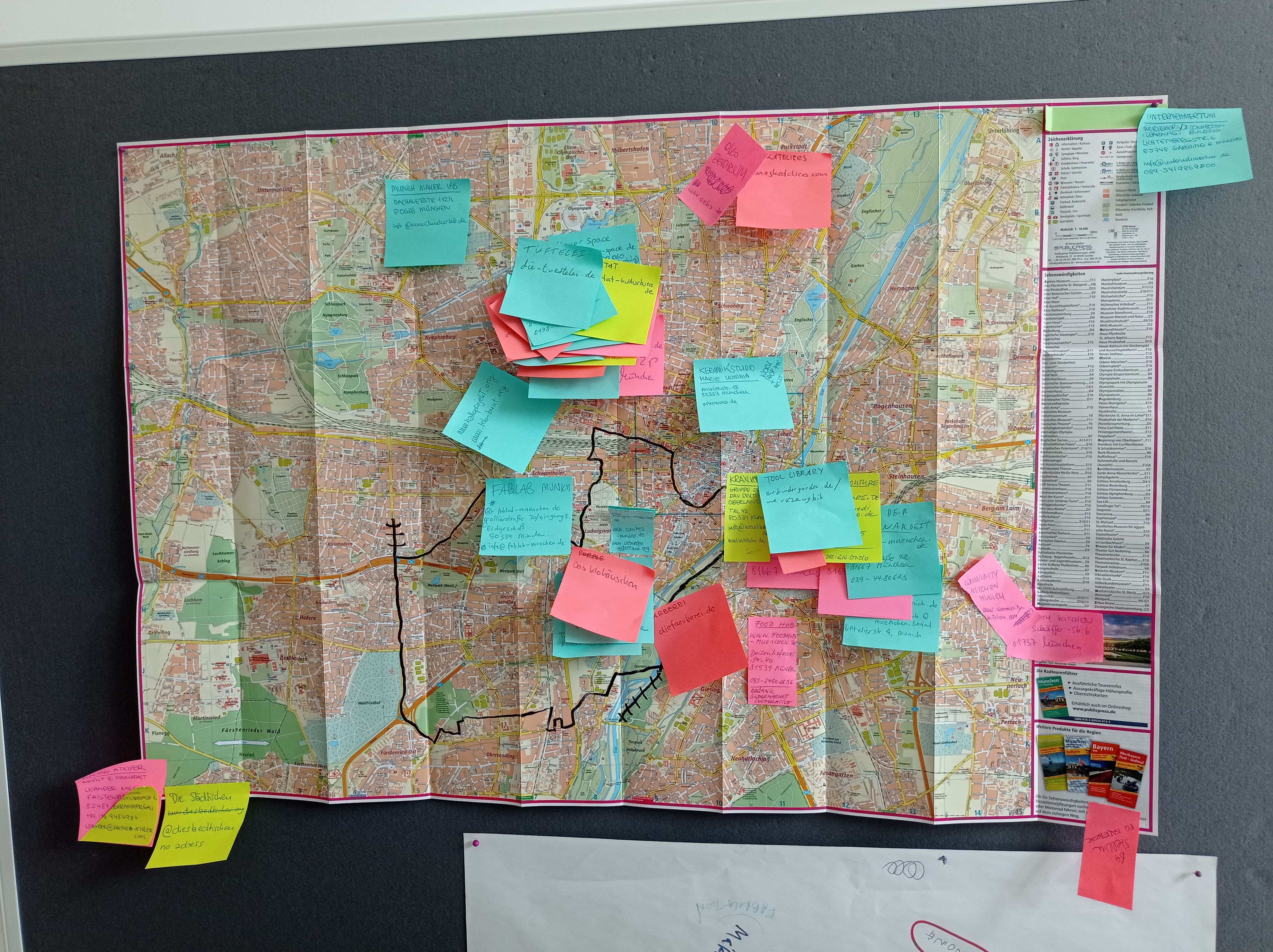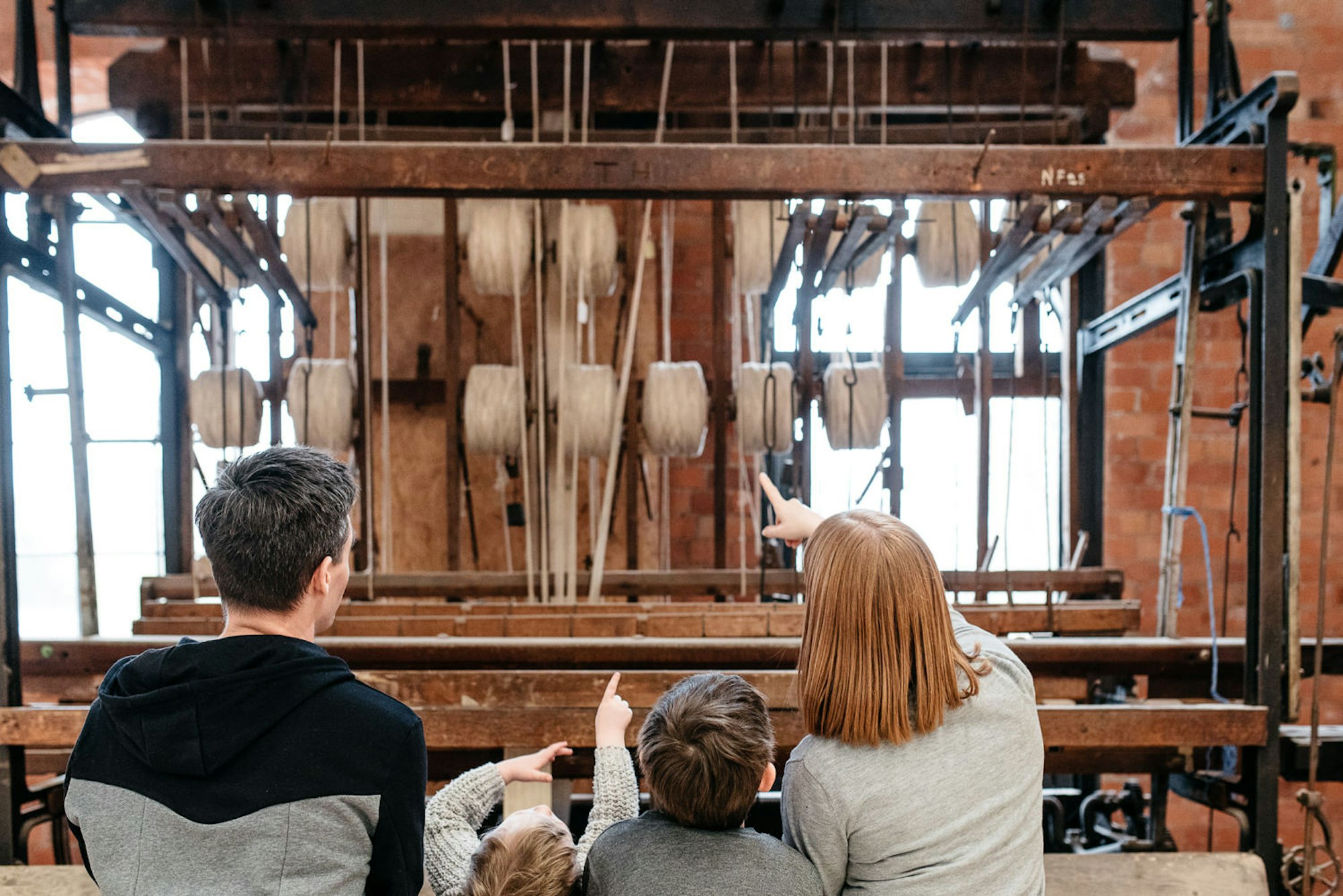The Make Works Guide to manufacturing in Glasgow

Call centres, business parks and a “thriving financial centre” might not make for a city building itself a new industrial narrative, but if you look closely enough you’ll find that Glasgow is full of highly skilled fabricators, even if it is in the more unexpected of places.
The city, though de-industrialised from its steel-working, textiles and shipbuilding past, now happens to be a ‘cultural capital’. With that, come the hives of artists, designers and architects consistently sourcing materials, workshops and production processes ideally within the city boundaries. Metal workers, mould-makers, screenprinters and seamstresses are in ever increasing demand, and it comes as no surprise that Glasgow International have chosen to base this year's’ programme around artists who “focus on ideas of production, manufacture, material culture, design, history and labour, which all in turn reflect back out upon the city.”
But it is not only the cultural sector that are taking a role in this change. Glasgow has an increasing number of micro-businesses who have an invested interest in keeping production runs shorter, more bespoke, more local. There are the startup entrepreneurs (and their customers) who want to understand where and how their products are made. There are the communities wanting to repair or make everyday objects themselves. There’s the pop-up shops and agencies commissioning short runs of products (and many a temporary shop sign) while the larger fashion brands are all keen to claim their ‘Made in Scotland’ swing-tag.
And so, as factory finders who get to spend our time investigating manufacturing in Scotland, here is the Make Works guide to manufacturing in Glasgow. Where we tell you who’s making what, what’s being made where, and how you can be a part of it.
Central
Central Glasgow was built on the successes of Glasgow’s trading past. Today however, what were once chambers for the tobacco merchants are now repurposed as small scale factories of the future.

One example of this is Wonky Woolies, a small studio manufacturing custom knitted hats in Central Chambers, right next to Central Station. Nearby, at Gordon Street, are a long-standing collection of jewellery suppliers and tailors. And if you want to make things yourself, head over to Trongate. Here you’ll find facilities like Glasgow Print Studio, a printmaking facility providing equipment, machinery and workshop space to artists using fine art printmaking.
In this area, you’ll also find laser cutters and CNC machinists like PodBox, offering accessible cutting, engraving and router services. Around the corner are Paulin Watches, whose watches are all assembled in the city.

On Renfrew Street, you can find fabric digital printing at the Centre for Advanced Textiles (CAT) where minimum run is 1m for printing on fabrics like silk, linen and cotton. In and around Bath Street is also useful for short print runs on paper and basic binding, with Glasgow PDC, Exactaprint, and Service Point all nearby.

Down the hill and not to be forgotten are the MAKLab workshops at Charing Cross. MAKLab provide access to digital fabrication equipment including 3D Printers, vinyl and laser cutters that you can go and use yourself. Alongside their digital fabrication tools, you’ll also find their textiles lab offering access to cutting tables and overlockers and their jewellery workshop, Vanilla Ink, will also be found here. Access to such a breadth of equipment makes the building a really productive making space.
Southside and Ibrox
Until the 1840s, south of the river was a largely agricultural area, whose small population supported itself through cottage industries, such as handloom weaving. Over the years it developed a name for itself in the weaving, spinning and dying trade. There was also a colliery in Govanhill, "Dixon's Blazes" ironworks in Govan - and of course, this is the banks of the Clyde where our shipbuilding heartland developed.

Today, you’ll still find small scale industrial estates and fabricators all over the Southside. Just off the top of Victoria Road are artist fabricators Silo Design & Build; who outfit local restaurants like Ranjit’s Kitchen and frequently make work for the Tramway. Over on Pollockshaws Road you’ll find guitar makers, screenprinters, upholsterers and a jewellers workshop.
Slightly closer to the Clyde are shoe makers, Buchanan Brogues; a candle factory; bookbinders, fibreglass suppliers, a number of letterpress printers, like Glasgow Press, Ist Printing and Andersons. In the Kinning Park Industrial estate you’ll also find the weird and wonderful object supplier, Titan Props.

Ibrox is one of our particular favourites when it comes to industrial estates in the south of Glasgow. Here you will find gems of factories like Industrial Springs and metal fabricators Neptune Fabrications hidden behind intimidatingly high pebbledash walls. Closeby, you’ll find boat builders and wood workers, Galgael trust on Fairly Street.

We're also huge fans of the industrial estates in Hillington (towards the south west) where you’ll find water jet cutters Jet Cut and gasket makers William Johnston along with some of the best snack vans in Scotland to pick up your 11 o’clock piece.
East End
The East End of Glasgow is made up of what used to be small villages, such as Bridgeton, Carlton and Shettleston. As with the Southside, the East has its roots as cottage-industry and artisan weaving communities, with most homes owning a handloom, and bleaching fields surrounding the villages; such as those on Glasgow Green. By the 19th Century the weavers had started to be employed by the mills, as the East End became known for fine linen and carpet manufacturing.
Aside from textiles, the Glasgow’s East End made bricks and motor cars. Bridgeton was also home to the original Singer sewing machine factory, before it moved out to Clydebank in 1882. Today, industry in the East End is pretty sporadically spread out and exists in enclaves, often making use of older industrial space, particularly around Bridgeton and the Gallowgate.

One of the largest is leather tannery Andrew Muirheads in Dalmarnock.You wouldn’t notice it driving down Dunn Street, but once inside, you’ll find an impressive industrial setup, employing over 200 people and supplying low carbon leather to British Airways, SAK’s - or young designers looking to experiment in the material.
Also in Dalmarnock are metalworkers and sculptors, JP Fabrications who have made public work such as the Commonwealth ‘Big G’ and for artists such as Dalziel and Scullion. Down Gallowgate, you’ll also find a converted industrial space at Crown Point, home to screenprinters East End Press. Denniston has its fair share of makers, with 10KH upholsterers on Hillfoot Street amongst other alterations, repair, and bespoke tailoring services.

Further east in Tollcross, sign makers and shop fitters, SignPlan specialise in neon. CNC machining, vinyl cutting and acrylics. By the time you get to Queenslie estate there is even a soap factory.
For making things in the East End yourself, try WASPS on Hanson Street which houses both ceramics workshop, Glasgow Ceramics Studio and paper makers PULP. Next to Glasgow Green, in what was The Templeton Carpet Factory, is screenprinting workshop Square Club.
Port Dundas and Speirs Wharf
Speirs Wharf is an area to the north of the city, in and around the Forth and Clyde canal. In the 1900’s it was home to Pinkerton Power Station, a casting foundry and a Whisky distillery. Today, Speirs Wharf is all about the light industrial spaces and the small scale fabrication. You will find that the area produces more sculpture than any other part of the city.

The industrial estate highlight here is Maryhill. Home to about two dozen small manufacturers, the most interesting being artist fabricators Sculpture and Design Ltd. This team of artist-led metal workers, casters and fabricators have been producing work for the likes of Sara Barker, Martin Boyce and Jim Lambie for the last 20 years, so the workshop is always likely to have something unusual being made. You'll also find Willie Love in this neck of the woods, a passionate woodworker and cabinetmaker at Queens Cross.
Towards the M8 at Borron Street you’ll also find Port Dundas Business Park. Amongst the commercial printers and design consultancies, it’s worth noting prop maker Sorenzo Props, who make super accurate replica props from movies, video games and television.

Right next to the canal are Glasgow Sculpture Studios. Both commercial fabricators, and a membership led workshop, the organisation provide metal-working, wood and general fabrication equipment for its members.
The sculpture studios are part of a converted grain warehouse, The Whisky Bond, which is also home to many makers - from model makers Finch and Fouracre, laser cutting bureau Flux Laser to 3D printers STEP 3D and ceramacist Kevin Andrew Morris.

Nearby you’ll also find The Glue Factory. Another converted industrial space where you are welcomed by the satisfying sound of a squeegee at Bespoke Atelier and repetitive churn of the risograph printer at Risotto studio. Downstairs is also home to artist fabricator and woodworker George Thompson.
Finnieston and The West
If you can cast your eyes past the beards, cocktails in jamjars, and the mysteriously pristine workwear, you will find that there is some industrial activity going on in Finnieston. Sitting just behind the Skypark, Smith and Rodgers are manufacturing some of the best french polish around; while over the hill in Lancefield Street, you’ll find garment manufacturer, Bar One Clothing.
As you head west you will find another production community in and around SWG3 Warehouse. Kelvin Framers under the archers, opposite Clydeside Galvanisers. Also here are well known outdoor bag manufacturers, Trakke and in Studio 223 a letterpress studio run by Edwin Pickstone.

Towards Partick you’ll start to find places like bookbinders Downie Allison Downie (hidden in a wee estate behind the library), and wood suppliers Glasgow Wood Recycling. Then, heading even further west another industrial state delight in Clydebank where you'll find 28 industrial comapnies at Beardmore Way, including electronic circuit board manufacturers, European Circuits.
If you live in Glasgow and think you know somebody who should have been mentioned here, you can get in touch with us to suggest a factory.
You might also be interested in reading our piece about the many things that you’ll find are ‘Made in Scotland’ today or ‘How do you make Turner Prize winning work?’
Categories
Article
Related stories
Why Make Work Locally
Alan Moore and Ten30 Fashion
Tips for Manufacturing in Scotland
A Life in Lace
In the Belly of the Beast: my one year manufacturing for Coca Cola






